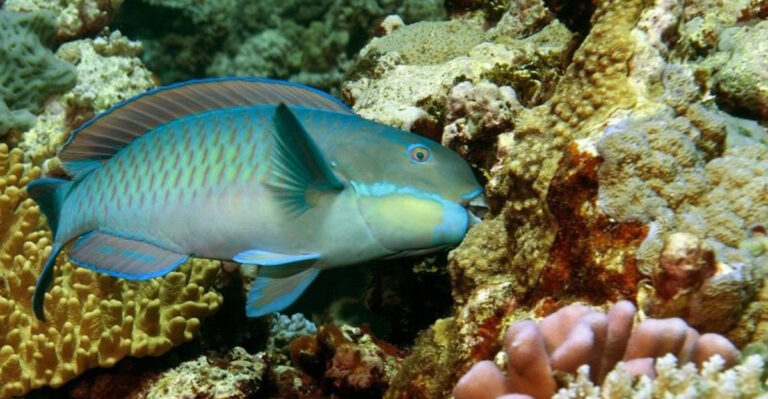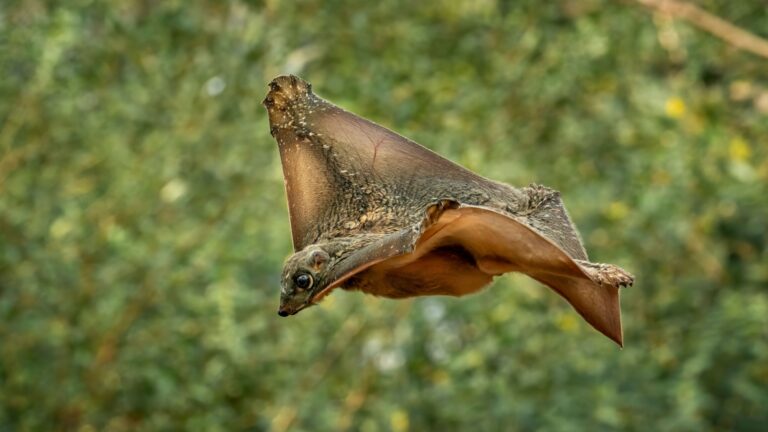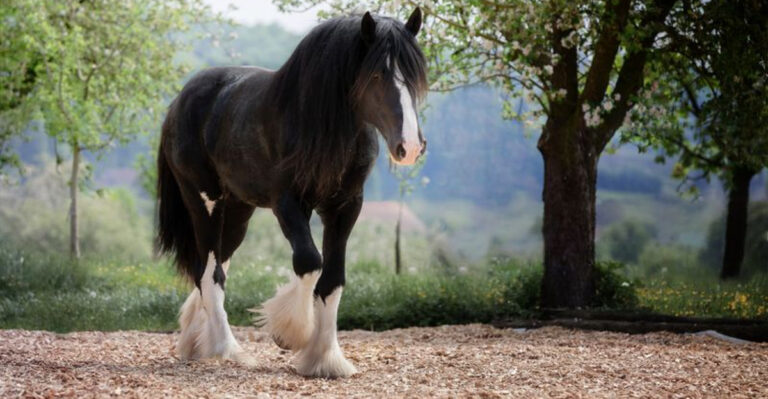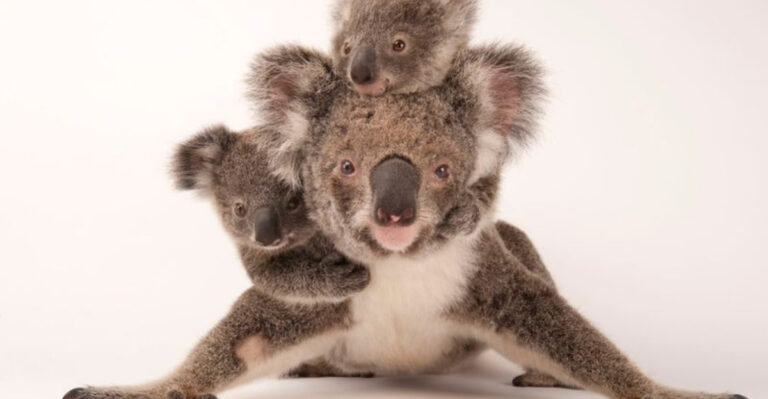10 Rare Reptiles That Look Like Something Out Of Science Fiction
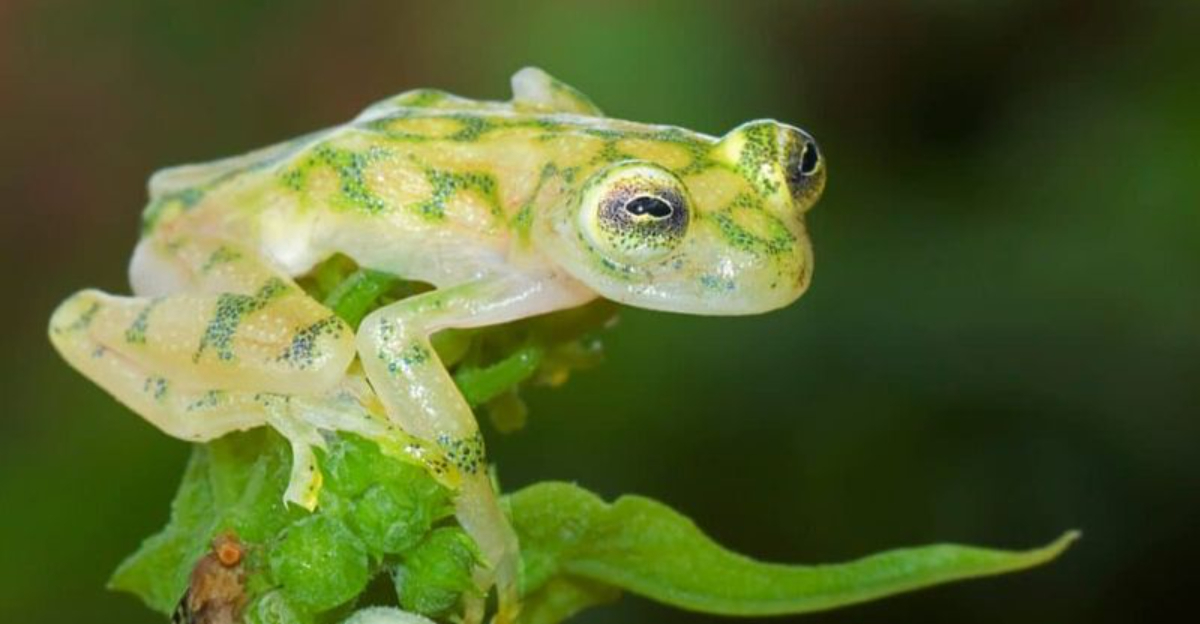
The world of reptiles is a fascinating tapestry of vibrant colors, strange shapes, and unexpected behaviors. Some of these creatures seem to have stepped right out of a science fiction novel.
Encompassing everything from chameleons with transparent skin to snakes that glide like dragons, these reptiles capture the imagination and spark wonder.
Explore these 10 extraordinary reptiles that defy the ordinary and challenge our perception of the natural world.
1. The Thorny Dragon
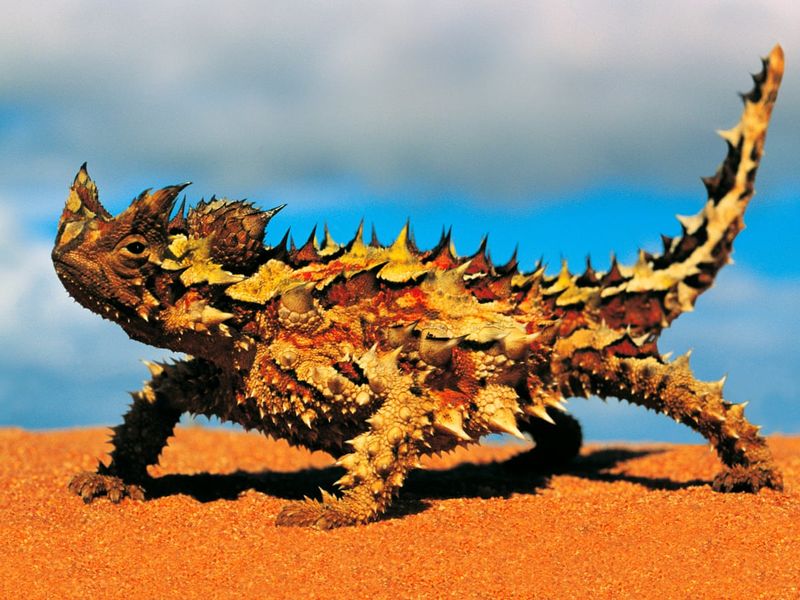
The Thorny Dragon, also known as the Moloch, wears its armor proudly.
Covered in spikes, this Australian native blends seamlessly into the desert. Its appearance is more than just for show; those spikes help it collect water in the arid landscape.
By observing raindrops travel from spike to mouth, we see the ingenuity of evolution. Its camouflage and water-gathering skills make it a master of survival.
Despite its fierce look, the Thorny Dragon is a gentle creature feeding mainly on ants.
2. The Satanic Leaf-Tailed Gecko

This gecko’s name might sound menacing, but its appearance is anything but.
The Satanic Leaf-Tailed Gecko mimics a fallen leaf so perfectly that even the most observant predator might overlook it. Native to Madagascar, its tail resembles a dry, curled leaf, complete with vein-like patterns.
This adaptation helps it hide from predators, ensuring survival in the wild. Its camouflage is a testament to nature’s artistry.
Despite its eerie name, the gecko is a harmless insect-eater, playing a vital role in its ecosystem.
3. The Flying Snake
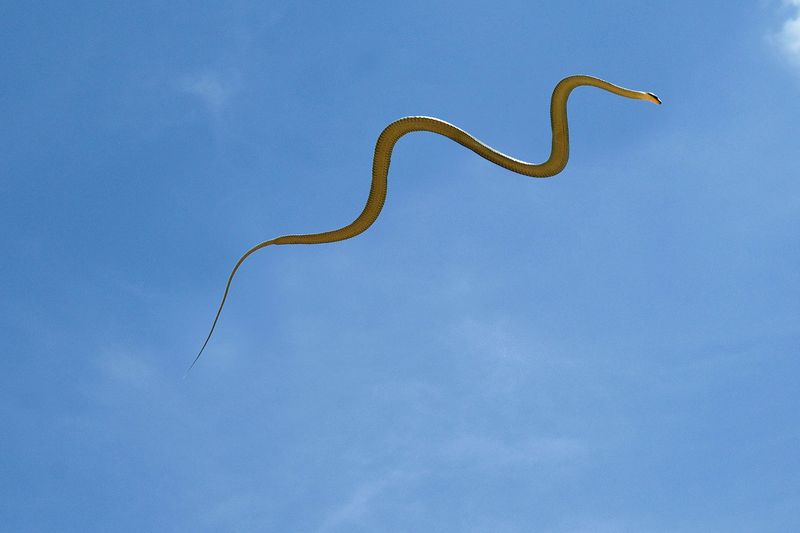
Imagine a snake that can fly! The Flying Snake flattens its body and glides between trees in the forests of Southeast Asia.
Though it doesn’t have wings, its aerial acrobatics are impressive, allowing it to escape predators and hunt prey with ease.
These snakes may seem like something out of a science fiction tale, but their gliding ability showcases a natural wonder.
Observing them offers a glimpse into the diverse adaptations of nature. Their movements are both a mystery and marvel for herpetologists.
4. The Glass Frog
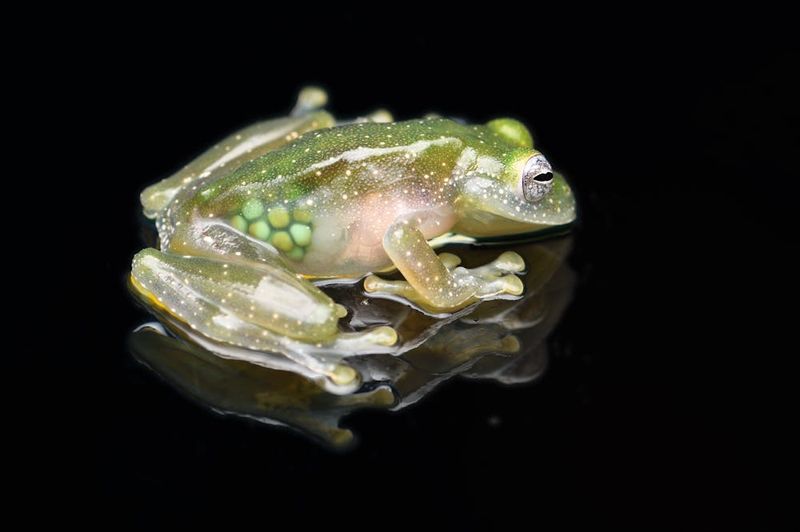
Meet the Glass Frog, a tiny marvel with skin so transparent, you can see its heart beating.
Found in the rainforests of Central and South America, this frog’s belly is a window to its inner workings. Its green color helps it blend with leaves, hiding it from predators.
The Glass Frog’s unique appearance leaves scientists and nature lovers alike in awe.
By watching them, we gain insight into how these delicate creatures survive in harsh environments. Their transparent skin is both a marvel and a reminder of nature’s creativity.
5. The Armadillo Lizard
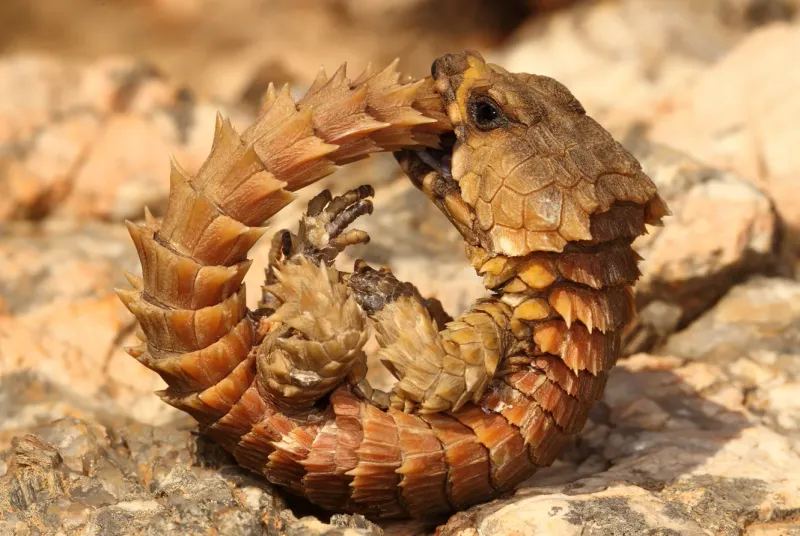
Meet the Armadillo Lizard, a reptile that resembles its mammalian namesake.
Found in South Africa, it has armor-like scales and a unique defense mechanism: curling into a tight ball when threatened, much like an armadillo.
This ability shields its soft underbelly from predators. Its appearance and behavior make it a fascinating study in nature’s ingenuity.
Living in rocky crevices, the Armadillo Lizard’s lifestyle is as intriguing as its defensive strategy, highlighting its adaptability to harsh environments.
6. The Frilled Dragon
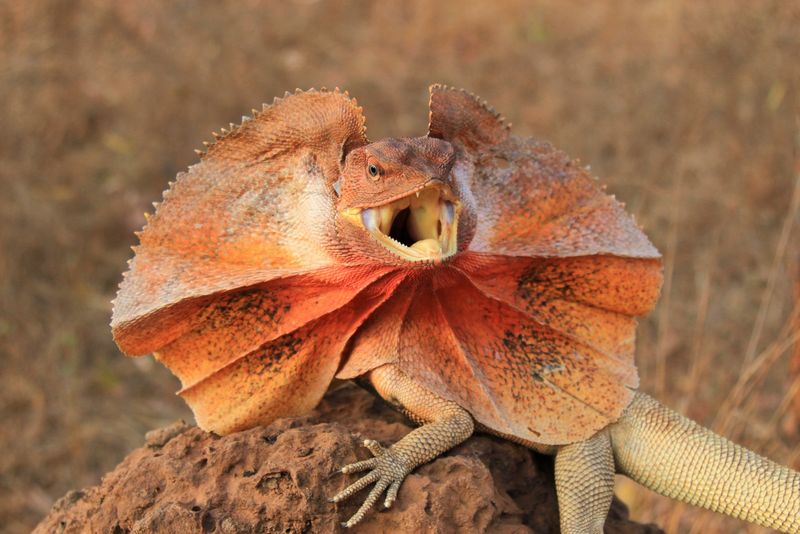
The Frilled Dragon is a creature that seems to have stepped from a myth. With a dramatic frill that pops open like an umbrella, this Australian native can intimidate predators or rivals.
When threatened, it stands tall, unfurling its frill and hissing audibly.
These theatrics are designed to scare off threats without a fight. The dragon’s display is a perfect blend of bluff and bravado.
Despite its fierce appearance, the Frilled Dragon is generally harmless, feeding on insects and small vertebrates.
7. The Chameleon
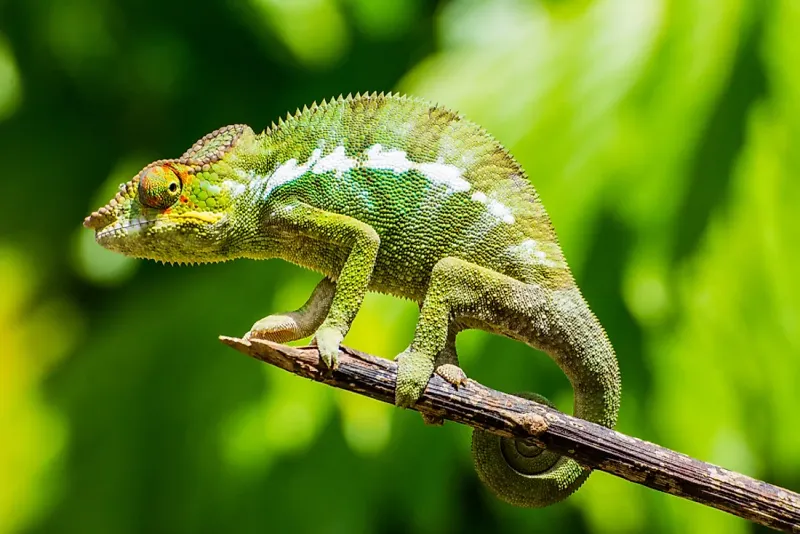
Chameleons are the masters of disguise. Their skin changes color to communicate, regulate temperature, or blend into their surroundings.
Found in various parts of the world, these reptiles captivate with their slow movements and independent eye rotation.
Their color-changing ability is not just for show; it’s a vital survival tool. Watching a chameleon shift through a spectrum of colors reveals nature’s adaptability and beauty.
These lizards teach us about communication and camouflage in the wild.
8. The Marine Iguana
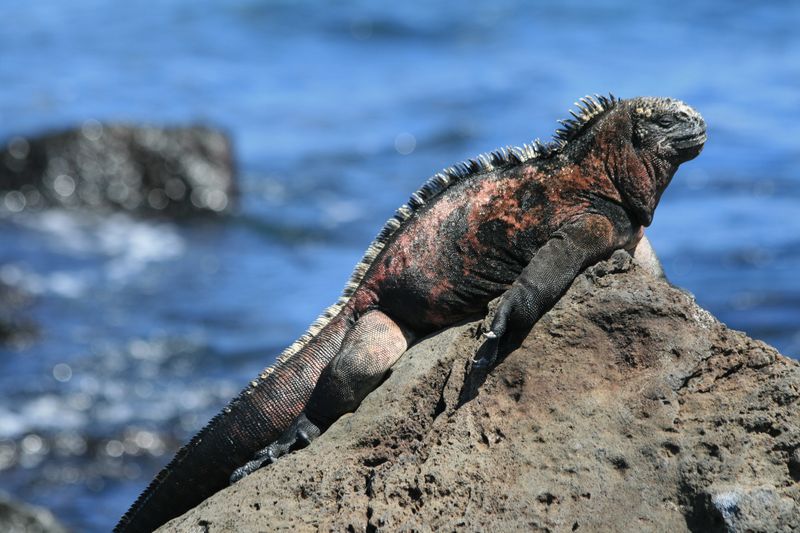
The Marine Iguana seems like a relic from a prehistoric era.
This unique lizard is the only one to forage in the ocean, diving for algae in the Galápagos Islands. Its dark skin absorbs heat, allowing it to warm up quickly after cold dives.
Covered in salt, they sneeze out the excess through specialized glands. Their ability to thrive in such a niche environment highlights the wonders of adaptation.
Despite their rugged appearance, Marine Iguanas are gentle giants of the sea.
9. The Komodo Dragon
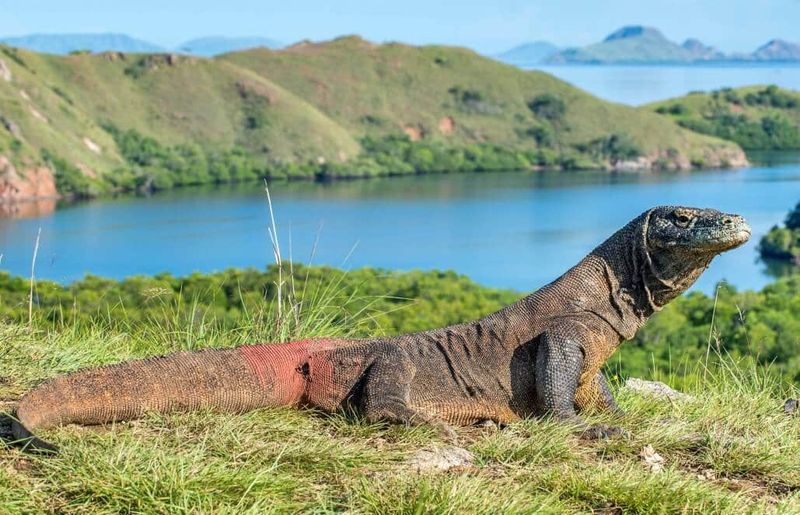
The Komodo Dragon is a true behemoth of the reptile world.
As the largest lizard, it rules the Indonesian islands with its sheer size and predatory prowess. Its powerful legs and keen sense of smell make it an efficient hunter.
Though fearsome, the Komodo Dragon is a creature of great ecological importance. Its role as a top predator maintains the balance in its ecosystem.
Observing them in the wild is an awe-inspiring experience, revealing the raw power of these ancient reptiles.
10. The Gila Monster
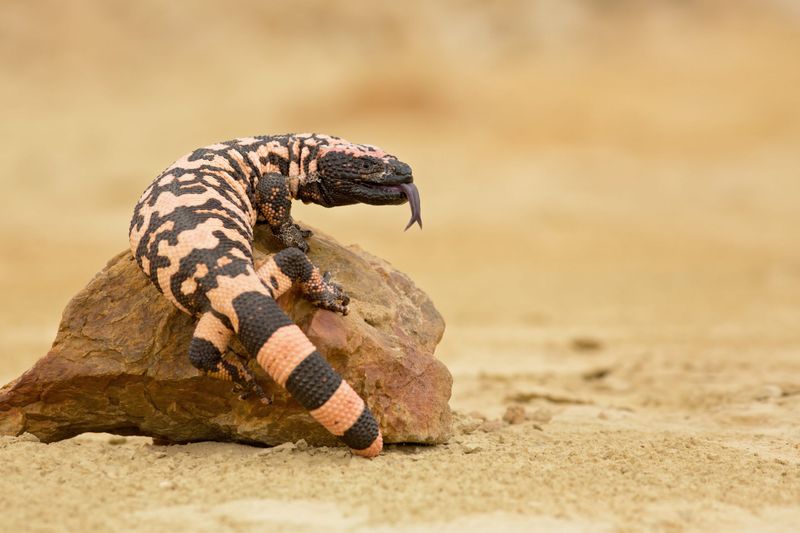
The Gila Monster is one of the few venomous lizards in the world. Found in the arid landscapes of the Southwestern USA, it sports a vibrant orange and black pattern.
Despite its name, the Gila Monster is generally slow-moving. Its venomous bite is a defense mechanism rather than a hunting tool.
This distinctive reptile teaches us about the balance between beauty and danger in nature. Its vibrant colors warn potential threats, while its slow pace conserves energy for survival.


